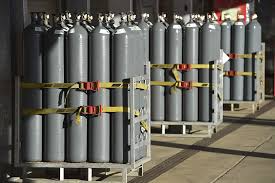Modern Uses of Hydro Excavation Vacuum Technology
Introduction
Traditional digging methods often fall short in industries where precision and safety are paramount. From urban infrastructure upgrades to environmental site management, there’s a growing need for cleaner, more accurate excavation solutions. This demand has led to the rise of advanced alternatives that minimize risk and disruption. Over the past decade, hydro excavation vacuum technology has rapidly transformed how construction, utility, and environmental management industries approach digging and debris removal. Utilizing a powerful combination of pressurized water and industrial-strength suction, hydro excavation vacuum systems provide unprecedented control and safety, making them the excavation method of choice for routine and highly sensitive projects.
The appeal of hydro excavation vacuum processes extends beyond mere efficiency. By drastically minimizing the risk of damaging underground infrastructure and reducing the ecological impact associated with traditional excavation, these systems support industry demands for safer, more sustainable work practices. Today, hydro excavation vacuum solutions are a driving force behind advanced infrastructure development and environmental stewardship.
Utility Maintenance and Construction
Hydro excavation technology has become vital in utility maintenance and construction, where the exact location of pipes, cables, and conduits often remains uncertain. Striking an underground utility during excavation can mean service disruptions, expensive repairs, safety hazards, and regulatory penalties. Hydro excavation vacuum systems offer pinpoint accuracy, reducing these risks and boosting productivity. According to the Common Ground Alliance, utility strikes continue to cause thousands of outages yearly in North America, highlighting the necessity for safer digging practices. These systems are now standard in exposing utility lines, performing slot trenching, and supporting directional drilling operations by providing visibility and careful soil removal.
Environmental Cleanup and Spill Response
Speed and containment are critical during environmental emergencies such as fuel or chemical spills. Hydro excavation is ideally suited for removing contaminated soils without exacerbating the release or spread of hazardous materials. The non-mechanical technique reduces worker exposure and limits disturbance to the site. It aids in safely transporting waste off-site for treatments or disposal, all while preventing further negative impact on local waterways and the broader ecosystem. This approach has been widely adopted in emergency response protocols recommended by national environmental protection agencies.
Sensitive Area Excavations
Operation near archaeological sites, wetlands, or wildlife habitats demands extraordinary care to preserve historical, cultural, and natural assets. Hydro excavation’s precision means that soils can be removed with minimal vibration, disruption, or compaction, safeguarding roots, artifacts, and ecosystem boundaries. For instance, municipalities often specify hydro excavation when working close to protected tree roots or during restoration projects within historic urban districts to maintain compliance with conservation regulations and community expectations.
Infrastructure and Renewable Energy Projects
Renewable energy ventures—wind farms, solar power fields, electric grid upgrades—require robust excavation solutions that respect existing infrastructure and the natural landscape. Hydro excavation vacuum systems shine in settings where heavy machinery could cause ground instability, erosion, or collateral damage. Their ability to precisely excavate for foundations, conduit runs, or substations without disturbing adjacent infrastructure makes them indispensable partners in building the clean energy grid of the future.
Winter Applications in Cold Climates
Traditional excavation grinds to a halt when the soil is frozen. Hydro excavation technology, adapted with heaters to warm the water stream, enables work to continue even in the depths of winter. This capability is a game changer for northern infrastructure projects and emergency utility repairs, eliminating costly seasonal work stoppages and helping municipalities and industries maintain service continuity year-round.
Benefits Over Traditional Methods
- Precision and Safety: Hydro excavation minimizes the likelihood of infrastructure strikes, decreasing risks to workers and the public. The process supports strict safety standards that are important to regulated industries.
- Environmental Stewardship: Hydro excavation vacuum systems help control erosion and sedimentation by reducing material displacement and confining spoil. Their gentle approach is critical for sensitive or ecologically important areas.
- Cost Efficiency: Avoiding accidental utility hits lowers project costs. Hydro excavation’s increased speed and minimal backfill requirements can compress project timelines, yielding further savings and convenience.
Future Trends in Hydro Excavation
Hydro excavation is rapidly evolving with automation, remote operation, and artificial intelligence integration. Developers are focusing on “smart” systems capable of reading soil conditions, mapping underground hazards, and enabling autonomous or remote guidance while continually reducing their ecological footprint. Major equipment manufacturers are also pioneering more sustainable water recycling techniques and powerful trucks and trailers purpose-built for urban environments and tight job sites.
Perhaps most promising, as urban areas densify and environmental regulations tighten, the demand for precise, low-impact excavation will surge, making hydro excavation vacuum technologies an essential service for the next generation of infrastructure projects and environmental initiatives.
read more : Best Practices for Handling and Storing Helium Tanks

